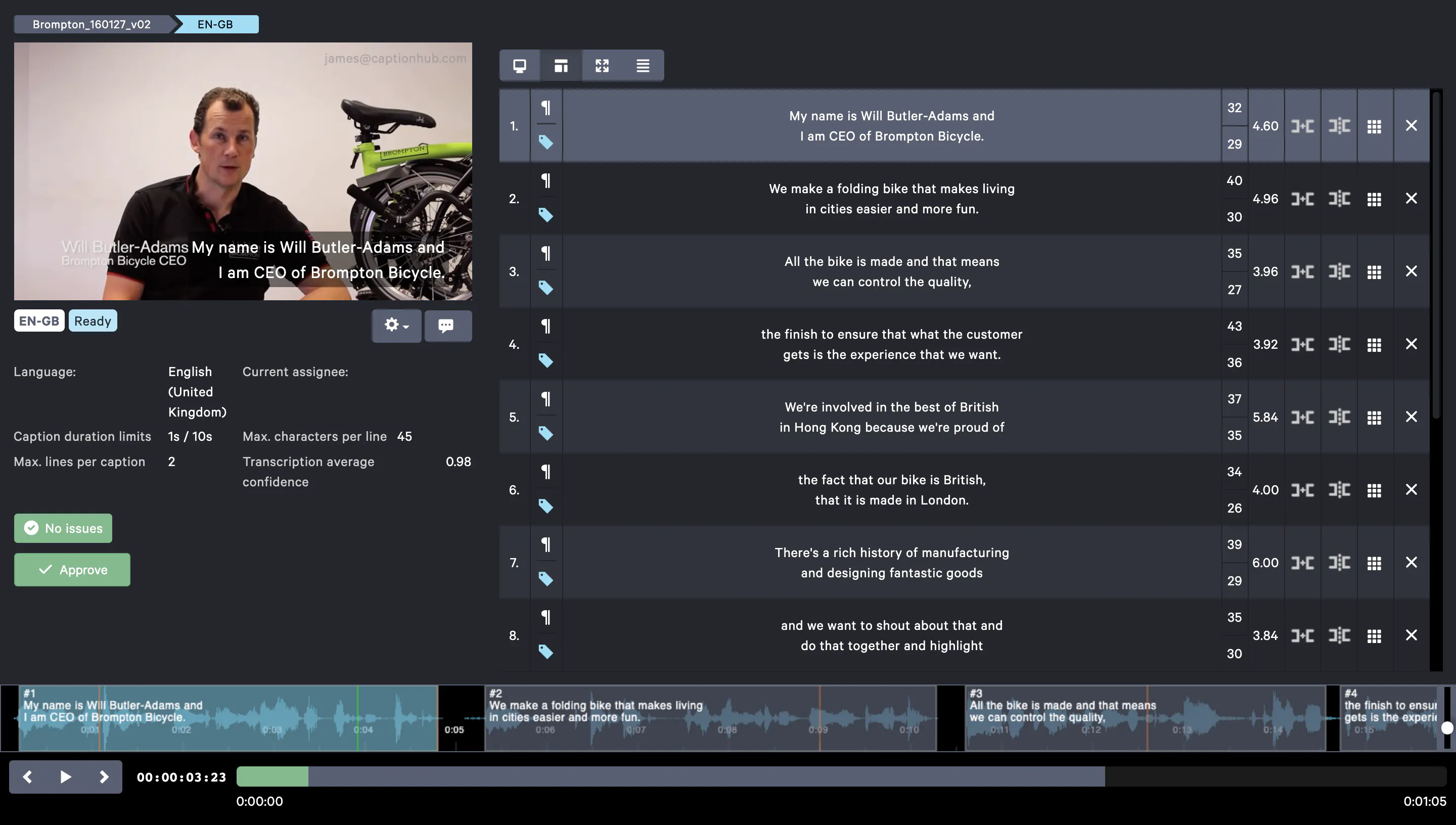CaptionHub
Summary
CaptionHub is a lot of things, but in short: It’s an enterprise tool for anything to do with subtitles.
It lets you transcribe a video, using AI-powered transcription engines. Create translations, either automatically or using an editor (or both) and export them to any format you can think of.
What I've worked on
I was hired originally to rebuild the front end. There were two major parts to this. First, the general project management around videos needed an overhaul to support more sophisticated workflows and customisable feature sets per team as the customer base and requirements grew.
Second, scaling issues with the video editor: It was a backbone JS app that worked well, but it struggled to scale as the length of videos and the amount of captions for a video increased. Problems that could be solved using virtualisation and virtual DOM.
 The CaptionHub caption editor
The CaptionHub caption editorI overhauled the UI using VueJS as the new base framework. This was a task that required a lot of pragmatism. Partial deliveries of improvements was the only solution that met business requirements, rather than a full rebuild. I focused on the most critical issues and moved over sections gradually as the old Rails/jQuery UI could no longer deal with the complexity of customisable workflows.
This turned out to be a good approach, iteration after iteration we could rebrand the site, refresh the UX, solve critical performance issues and deliver different tiers of feature support.
Current state
A couple of years later and there’s not much legacy code left, and it’s a modern performant app. It was always an excellent core product, but in the world of modern enterprise SaaS software there’s a lot more to it: platform integrations, self hosting, feature tiers, scaling etc. CaptionHub is a product that can be shaped to meet all these demands. And that starts with building applications that at their architectural core can deal with modularity, across the whole stack.

